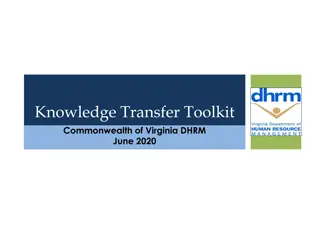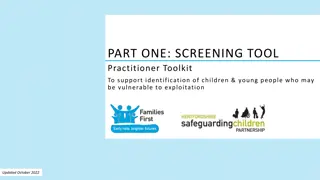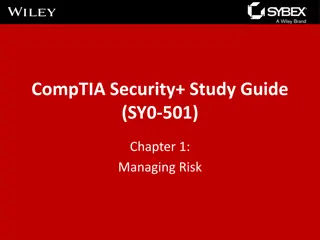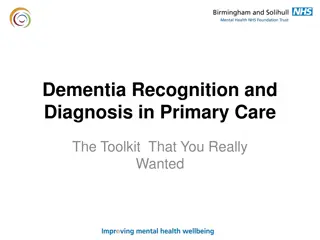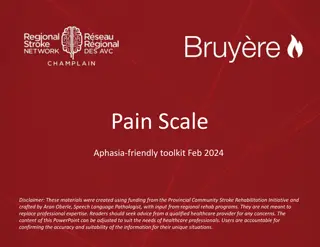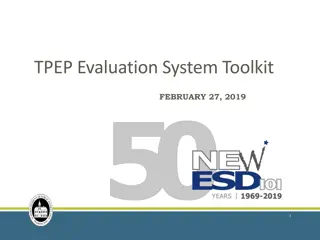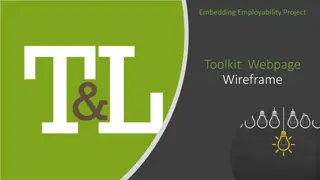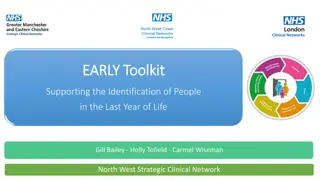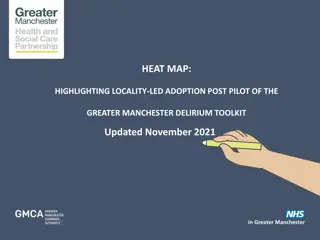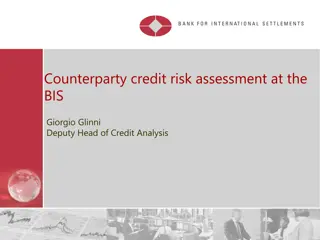Risk Assessment Toolkit for Organizational Needs
Adapt and customize risk assessment examples to suit your organization's requirements using this toolkit. Modify text, add or delete rows or columns, and tailor the toolkit to fit your needs. Evaluate risk factors, likelihood, impact, control effectiveness, and required actions effectively. Utilize the provided tables and guidance for a comprehensive risk assessment process.
Download Presentation

Please find below an Image/Link to download the presentation.
The content on the website is provided AS IS for your information and personal use only. It may not be sold, licensed, or shared on other websites without obtaining consent from the author. Download presentation by click this link. If you encounter any issues during the download, it is possible that the publisher has removed the file from their server.
E N D
Presentation Transcript
Risk Assessment Toolkit You can adapt these examples to suit your organisations needs. The normal Powerpoint editing functions will allow you to edit text, add or delete rows or columns and modify any aspect of the Toolkit. Explanatory text has been added to assist where necessary and can be deleted.
Risk assessment register (example to be adapted to your needs) Risk factor 1: Risk factor 2: Risk factor 3: Risk factor 4: Risk factor 5: What is the harm or impact the risk factors could cause? This is the harm to people, organization and/or community. What is the likelihood that the harm or impact would occur? Develop a scale to assess likelihood of the harm or impact, tailored to your organisation from rare to almost certain see Table 1 Risk Likelihood below for an example. What is the level of impact or harm? Assess the level of impact or harm that may be caused by the risk factors see Table 2 Risk Impact below for an example.
Risk factor 1: Risk factor 2: Risk factor 3: Risk factor 4: Risk factor 5: What is the level of risk? Assess the level of risk by applying a rating of high , medium or low based on business judgement see Table 3 Control Effectiveness Matrix below for an example. What controls are currently in place? How effective are the current controls? Assess controls according to design effectiveness (is the control suitably designed to address the risk) and operational effectiveness (is the control operating as intended) see Table 4 Control Effectiveness Matrix below for an example.
Risk factor 1: Risk factor 2: Risk factor 3: Risk factor 4: Risk factor 5: What further controls are required? Actioned by Date due Date complete Maintenance and review
Table 1: Risk Likelihood (example) Likelihood Description Probability Almost certain Expected to occur within a 12-month period with ~ 90% probability 90% Likely Will probably occur within a 12-month period with ~ 65% probability 65% Possible Might occur within a 12-month period with ~ 20% probability 20% Unlikely Could occur within a 12-month period with ~ 10% probability 10% Rare Extremely low (~4%) probability this will occur within a 12-month period
Table 2: Risk Impact (example) Impact rating Financial impacts Non-financial impacts People Clients Regulatory Media Business partners Investors Government Consumer - public Insignificant Develop guidance and definitions for each impact under each of the impact ratings, tailored to your organisation Minor Moderate Major Severe
Table 3: Risk Assessment Matrix (example) I m p a c t Insignificant Minor Moderate Major Severe Almost certain Low Medium High High High Likely Low Low Medium High High L i ke l i h o o d Possible Low Low Medium Medium High Unlikely Low Low Low Medium High Rare Low Low Low Medium Medium
Table 4: Control Effectiveness Matrix (example) Operating Effectiveness Individual Control Strength Effective (E) Partially Effective (PE) Needs Development (ND) Effective E PE ND Design Effectiveness Partially Effective PE ND ND Needs Development ND ND ND









